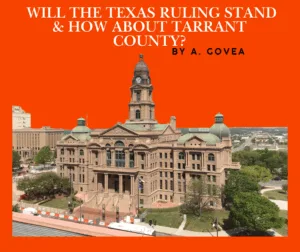Over the last few weeks, many have turned their attention to Melissa Lucio, who is currently awaiting her death sentence in Gatesville, Texas. She is set to be put to death in less than a week on April 27, 2022, but her fate is still unknown with her guilt in question.
Nisie Govea Jimenez
She is one of six Texas women currently on death row, but she could become the first Latina to be put to death in Texas. In less than ten years, people of color made up two-thirds of death sentences. Is it possible that with the increase of People of color being condemned, the risk of putting an innocent person to death increases? In fact, according to TCADP, a non-profit organization dedicated to abolishing the death penalty, Black and Latinos are more likely to be wrongfully convicted.
December 7, 1989, was supposed to be a time for family and holiday fun, but instead, Carlos DeLuna was executed by the state of Texas. At the time of his execution, de Luna clung to his innocence. He pleaded with the courts to take him seriously, but they refused and he may have not even had proper counsel. During his trial, he stated that he was not responsible for the murder of convenience store clerk Wanda Lopez in Corpus Christi and that a man who looked identical to him, Carlos Hernandez, was the actual killer. However, his theory was rejected and even mocked as a “phantom” of Luna’s imagination.

After de Luna was executed, Columbia Law School Professor James Liebman and a team of students conducted an 18-month investigation into his conviction and later published the article, Los Tocayos Carlos: An Anatomy of a Wrongful Execution. During the investigation, it was found that De Luna was railroaded entirely by the legal system. They claimed that the forensic investigation was inadequate and described the investigator’s work as sloppy. His legal representation was also insufficient; one of his attorneys had never even tried a criminal case. The entire investigation was riddled with inaccuracies and inconsistencies on the part of the detectives.
Since 1999, death penalty cases have declined, although not steadily. In 2021 there were three new death sentences, compared to 48 in 1999. The support for the death sentence has declined. According to a Gallup poll in 2006, 65% of responders agreed with the penalty, while in 1994, 80% of responders agreed. American Friends Service Committee’s Criminal Justice Program maintains a list of faith and ethical groups that are opposed to the death penalty, and the most common western religions are included on that list, American Baptists, Evangelical Lutheran Church in America, United Methodist Church, and the United States Catholic Conference. However, some religious groups have yet to publicly stance on that matter, like the Church of Jesus Christ of Latter-day Saints. According to a 2004 Gallup Poll, 7 out of 10 protestants support the death penalty. As of now, there are not any protestant organizations included in the same list mentioned earlier.
However, despite race, religion, or political views, we might ask ourselves if the death penalty is outdated on a medieval scale. While Texas uses lethal injection to put death row inmates to death, other states have had to turn to alternative ways of execution if they do not have access to the lethal injection drugs. Some may find the other methods disturbing. Other methods include electrocution, gas chamber, hanging, and even firing squad. Utah offers inmates the option to choose a firing squad, and they do not always have access to the drugs, so some may not have a choice at all. In South Carolina, electrocution is still used as the default method of execution. Of course, not everyone on death row is innocent, and their victims were likely murdered long before a death row inmate meets their untimely fate, but revenge could be at the cost of innocent lives.
In 2011 a documentary by Werner Herzog, Into the Abyss: A Tale of Death, a Tale of Life, followed death row inmate Michael Perry as he awaited to be condemned for a triple homicide in Conroe, Texas. The director interviewed many people surrounding the case, including the victim’s sister, who valiantly agreed with his sentencing, and she described an overwhelming feeling of relief as her mom and brother’s murderer paid for what he had done back in 2001. He was 19 years old at the time of his offense but was not executed until nine years later. The documentary also included an interview with a former correctional officer whose job was to complete the executions. Sadly, he described a gruesome experience that, after years of putting death row inmates to death, left him with severe PTSD. So while the surviving family members described the relief they felt to see Michael Perry die, the ones in charge of facilitating and carrying out the death sentence may be suffering.
The death sentence has been controversial since the 70s, when it became legal for states to decide whether they wanted to allow the ultimate punishment as an option for offenders deemed eligible. Along with China, the United States is the last industrial civilization that has not abolished the death penalty.
It might be possible that the American legal system needs to recalibrate the scale of justice to achieve genuine rectitude






